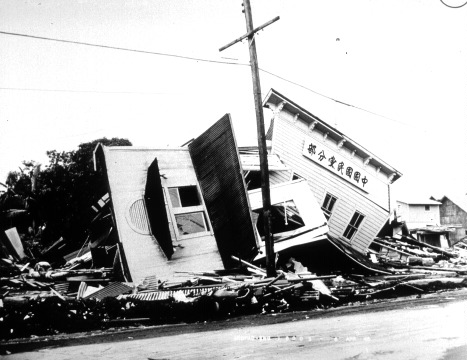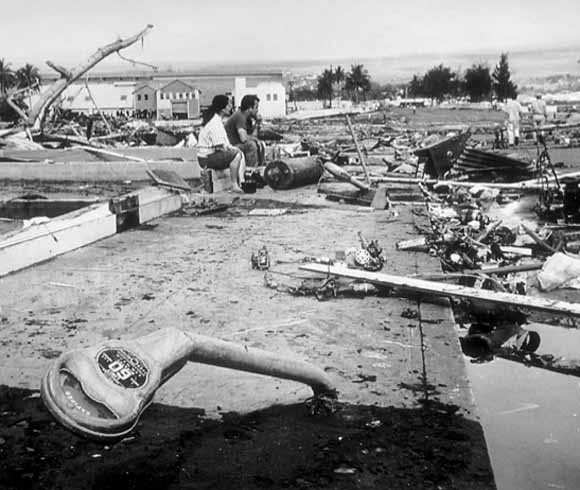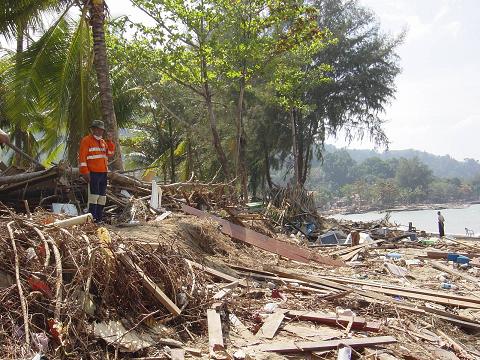The Physics of Tsunamis
History
One the largest tsunamis in recent history was the Cascadia tsunami in 1700. This occured when two continental plates (stretching from Vancouver to California) slipped causing a 9.0 magnitude earthquake. The resulting tsunami stretched across the entire Pacific and is recorded in Japanese history. Researchers have recently found the evidence in the Washington/Oregon area of the huge tsunami there. Both Japanese and Northwest Native American cultures tell of the tsunami. Japanese historians say that the tsunami was over 5 meters tall, and Native American legends tell of landslides and entire villages disappearing in the same time period.
Most of the information about tsunamis is from the last century and specifically the last 50 years; this is because this is when we have just started to understand the physics behind them.
Most of the major tsunamis that have occured are in the Pacific because there are much more earthquakes in the Pacific "Ring of Fire". The Pacific tectonic plate is very active and causes sucduction and slipping between plates, thus causing many earthquakes.
Another large tsunami occured in 1946. This was caused by a 7.8 earthquake on the Aleutian Islands that spread to Hawaii. There was little warning in Hawaii and a large death toll followed. The result of the tsunami was 165 deaths and $26 million in damages. This tragedy had hope though because out of this event came the Pacific Tsunami Warning System.

[http://www.geophys.washington.edu/tsunami/general/historic/images_46.html]
The 1960 earthquake in Chile was ripe for causing a tsunami, and it caused one of the largest tsunamis in recent history. The tsunami stretched across the entire Pacific causing large-scale destruction in Hawaii and Japan and in other places. Some towns in Japan were saved as the result of "watchers" whose job included checking the ocean for unusual behavior. Several hundred people owe their lives to the men that saved entire towns.

[http://pubs.usgs.gov/circ/c1187/]
The Alaskan Quake of 1964 caused a significant tsunami as well, killing 122 people and causing over $106 million in damage.
The most recent major tsunami was in the Indian Ocean. This is unusual because almost all tsunamis take place in the Pacific. On the morning of December 26th, 2004 a magnitude 9.0 earthquake rocked Southeast Asia. This quake triggered a tsunami that is the most deadly to date. Almost 300,000 people have died as a result of the tsunami, and hundreds of thousands more are displaced or homeless. The quake was the largest in 40 years and was so large that it moved the ocean several meters vertically at the epicenter; this is enormous for tsunamis. In some places the tsunami was as high as 15 meters but in many areas it just occured as a rushing wall of water, more similar to a flood than waves. The ocean receded very far before rushing back in, exposing fish and seafloor never seen before. This piqued the curiousity of many people thus causing many more deaths than there would have been.

[http://www.strangecosmos.com/content/item/105866.html]
The above series of pictures show how far out the ocean went before the impact of the tsunami. This drawback of the ocean is just the trough of the waves hitting shore, which will soon be followed by the crest of the wave.

[http://www.adrc.or.jp/publications/TS2004000147/Home.html]




